Georgiy Platonov
History-Aware Question Answering in a Blocks World Dialogue System
May 26, 2020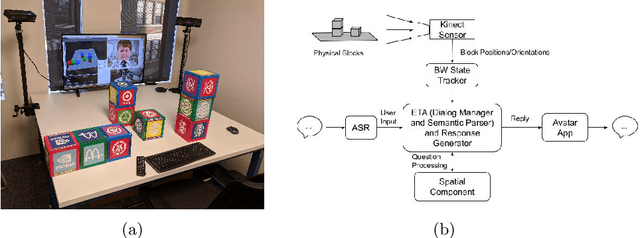
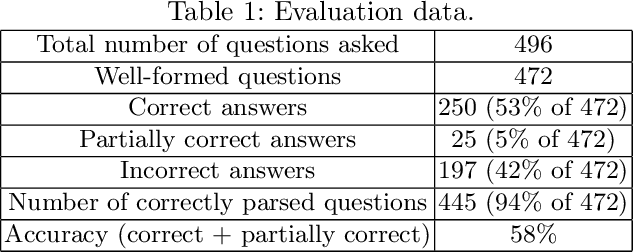
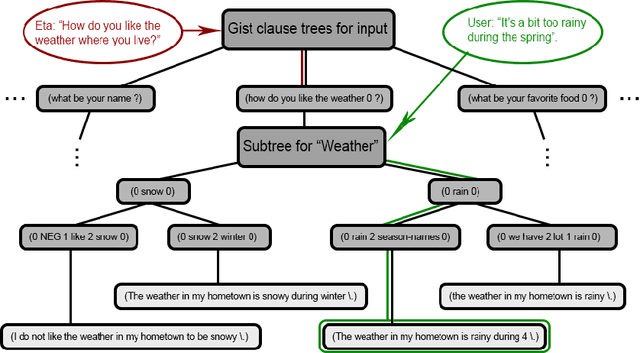
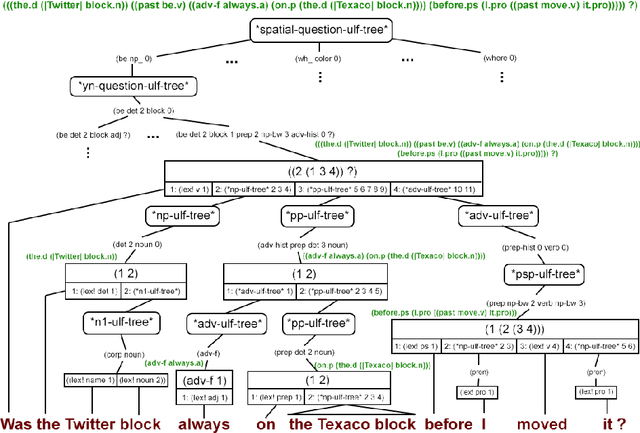
Abstract:It is essential for dialogue-based spatial reasoning systems to maintain memory of historical states of the world. In addition to conveying that the dialogue agent is mentally present and engaged with the task, referring to historical states may be crucial for enabling collaborative planning (e.g., for planning to return to a previous state, or diagnosing a past misstep). In this paper, we approach the problem of spatial memory in a multi-modal spoken dialogue system capable of answering questions about interaction history in a physical blocks world setting. This work builds upon a full spatial question-answering pipeline consisting of a vision system, speech input and output mediated by an animated avatar, a dialogue system that robustly interprets spatial queries, and a constraint solver that derives answers based on 3-D spatial modelling. The contributions of this work include a symbolic dialogue context registering knowledge about discourse history and changes in the world, as well as a natural language understanding module capable of interpreting free-form historical questions and querying the dialogue context to form an answer.
A Spoken Dialogue System for Spatial Question Answering in a Physical Blocks World
Nov 06, 2019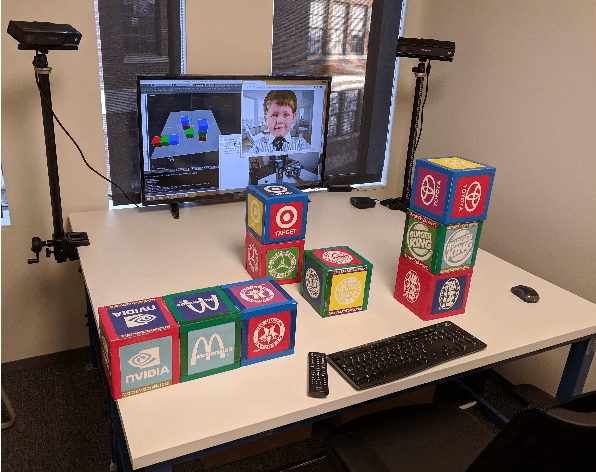
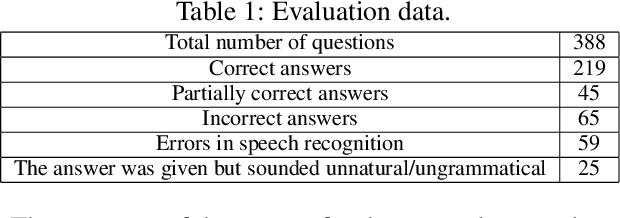
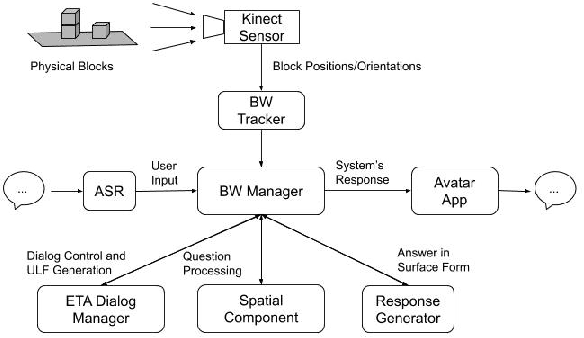

Abstract:The blocks world is a classic toy domain that has long been used to build and test spatial reasoning systems. Despite its relative simplicity, tackling this domain in its full complexity requires the agent to exhibit a rich set of functional capabilities, ranging from vision to natural language understanding. There is currently a resurgence of interest in solving problems in such limited domains using modern techniques. In this work we tackle spatial question answering in a holistic way, using a vision system, speech input and output mediated by an animated avatar, a dialogue system that robustly interprets spatial queries, and a constraint solver that derives answers based on 3-D spatial modeling. The contributions of this work include a semantic parser that maps spatial questions into logical forms consistent with a general approach to meaning representation, a dialog manager based on a schema representation, and a constraint solver for spatial questions that provides answers in agreement with human perception. These and other components are integrated into a multi-modal human-computer interaction pipeline.
 Add to Chrome
Add to Chrome Add to Firefox
Add to Firefox Add to Edge
Add to Edge